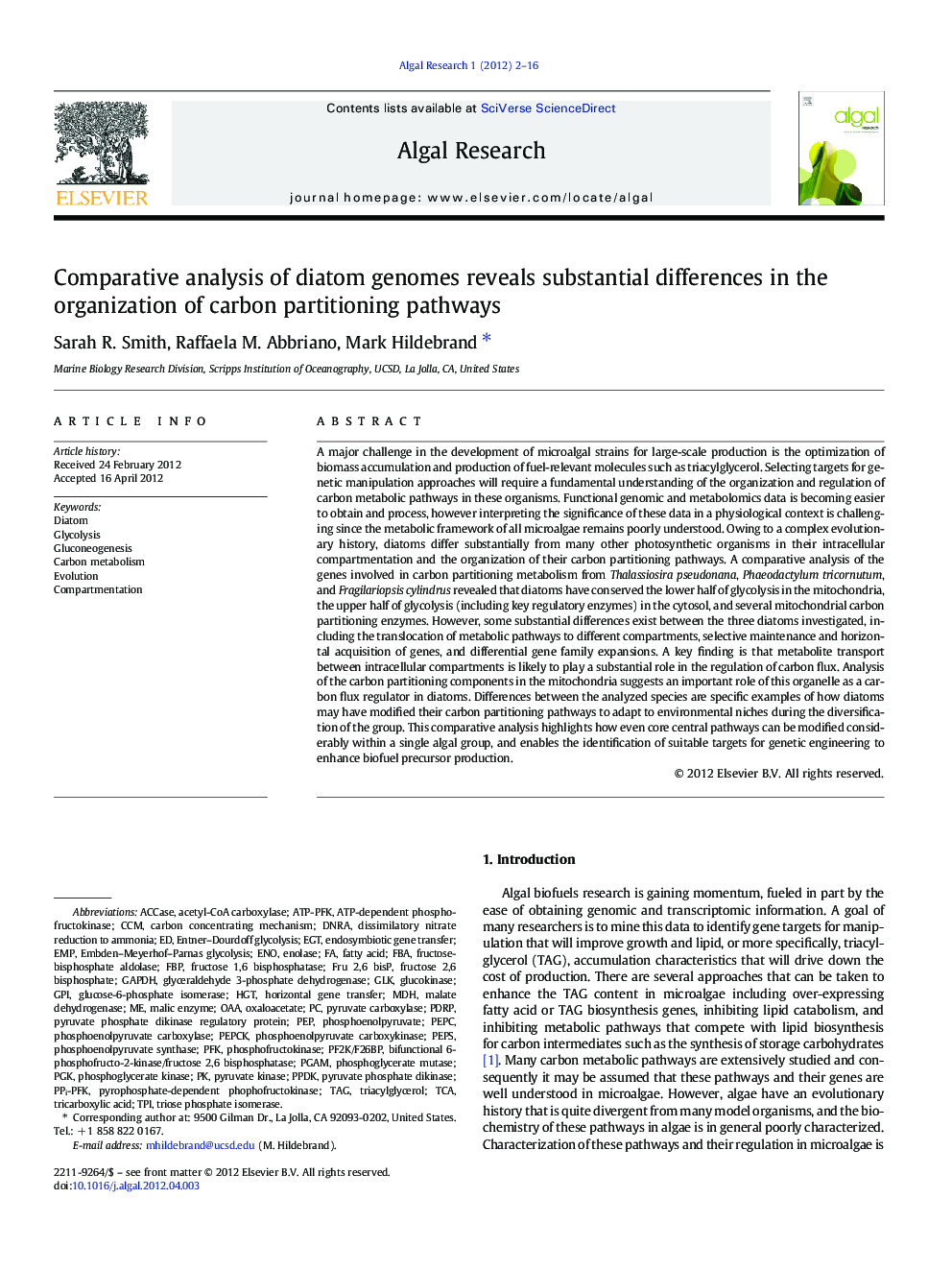| Article ID | Journal | Published Year | Pages | File Type |
|---|---|---|---|---|
| 10687534 | Algal Research | 2012 | 15 Pages |
Abstract
A major challenge in the development of microalgal strains for large-scale production is the optimization of biomass accumulation and production of fuel-relevant molecules such as triacylglycerol. Selecting targets for genetic manipulation approaches will require a fundamental understanding of the organization and regulation of carbon metabolic pathways in these organisms. Functional genomic and metabolomics data is becoming easier to obtain and process, however interpreting the significance of these data in a physiological context is challenging since the metabolic framework of all microalgae remains poorly understood. Owing to a complex evolutionary history, diatoms differ substantially from many other photosynthetic organisms in their intracellular compartmentation and the organization of their carbon partitioning pathways. A comparative analysis of the genes involved in carbon partitioning metabolism from Thalassiosira pseudonana, Phaeodactylum tricornutum, and Fragilariopsis cylindrus revealed that diatoms have conserved the lower half of glycolysis in the mitochondria, the upper half of glycolysis (including key regulatory enzymes) in the cytosol, and several mitochondrial carbon partitioning enzymes. However, some substantial differences exist between the three diatoms investigated, including the translocation of metabolic pathways to different compartments, selective maintenance and horizontal acquisition of genes, and differential gene family expansions. A key finding is that metabolite transport between intracellular compartments is likely to play a substantial role in the regulation of carbon flux. Analysis of the carbon partitioning components in the mitochondria suggests an important role of this organelle as a carbon flux regulator in diatoms. Differences between the analyzed species are specific examples of how diatoms may have modified their carbon partitioning pathways to adapt to environmental niches during the diversification of the group. This comparative analysis highlights how even core central pathways can be modified considerably within a single algal group, and enables the identification of suitable targets for genetic engineering to enhance biofuel precursor production.
Keywords
PGKeNOMDHGPienolasePEPCKHGTEGTendosymbiotic gene transferPFKPGAMPEPCOAAOxaloacetateDNRAPEPSPPDKPDRPTAGATP-PFKPPi-PFKFBATCAGAPDHFBPPEPTPIACCaseEMPCCmmalic enzymeacetyl-CoA carboxylasetricarboxylic acidFatty acidHorizontal gene transfertriacylglycerolCompartmentationdiatomTriose phosphate isomeraseFructose-bisphosphate aldolaseEvolutionphosphoenolpyruvatePhosphoenolpyruvate carboxylasephosphoenolpyruvate carboxykinasephosphoenolpyruvate synthasePhosphofructokinasephosphoglycerate mutasephosphoglycerate kinaseCarbon metabolismmalate dehydrogenasecarbon concentrating mechanismpyruvate carboxylasepyruvate kinasePyruvate phosphate dikinaseDissimilatory nitrate reduction to ammoniaGlucose-6-phosphate isomeraseGluconeogenesisGlucokinaseGlkglyceraldehyde 3-phosphate dehydrogenaseGlycolysis
Related Topics
Physical Sciences and Engineering
Energy
Renewable Energy, Sustainability and the Environment
Authors
Sarah R. Smith, Raffaela M. Abbriano, Mark Hildebrand,
